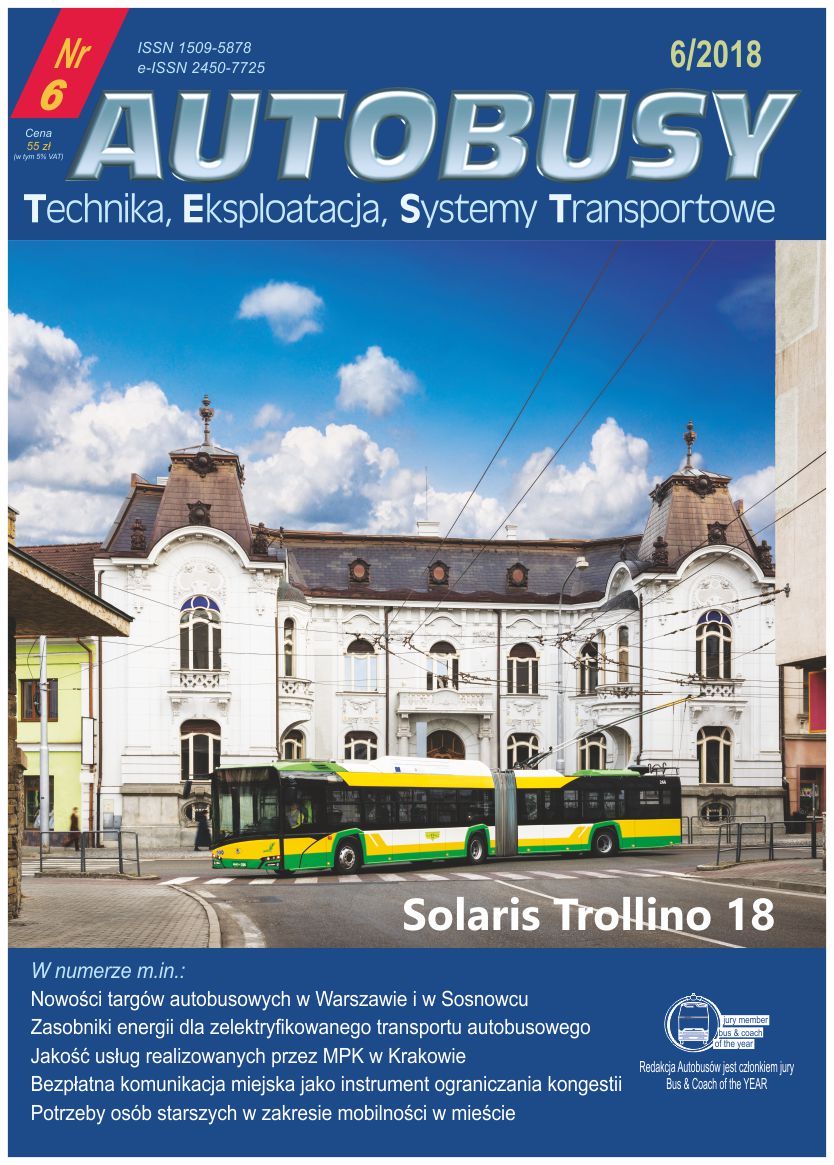Initial assessment of the possibility of using glass waste coming from worn-out fluorescent lamps as aggregates for cement concrete
DOI:
https://doi.org/10.24136/atest.2018.083Keywords:
glass waste, fluorescent lamps, aggregate, cement concrete, cement compositeAbstract
The paper presents preliminary analyzes of the possibilities of using glass waste from extruded fluorescent lamps as aggregates for cement concretes. The research material was obtained from a company that utilizes electrical waste. Glass from pre-sorted lighting elements was transported to the laboratory and crushed in a steel mortar. In this way, the aggregate obtained was subjected to the basic tests that are carried out for aggregates traditionally used in construction. The specific density of aggregate, bulk density, absorbability, grain shape and texture type were examined. In the next stage of research work, a concrete mix was made, in which, as a substitute for 25% gravel aggregate, crushed aggregate from crushed fluorescent lamps was used. The compressive and tensile strength of the concrete thus formed was tested. Analysis of the test results showed that broken glass from worn out fluorescent lamps can potentially be used as an aggregate for cement concrete.
Downloads
References
Ahmad S., Umar A., Masood A., Properties of Normal Concrete, Self-compacting Concrete and Glass Fibre-reinforced Self-compacting Concrete: An Experimental Study, Procedia Engineering, Volume 173, 2017, pp. 807-813.
Ahmed F., Omran, Etienne D.-Morin, Harbec D., Tagnit-Hamou A., Long-term performance of glass-powder concrete in large-scale field applications, Construction and Building Materials, Volume 135, 15 March 2017, pp. 43-58.
Ali A. Aliabdo, Abd Elmoaty M. Abd Elmoaty, Ahmed Y. Aboshama; Utilization of waste glass powder in the production of cement and concrete, Construction and Building Materials, Volume 124, 15 October 2016, pp. 866-877.
Dehghan A., Peterson K., Shvarzman A., Recycled glass fiber reinforced polymer additions to Portland cement concrete, Construction and Building Materials, Volume 146, 15 August 2017, pp. 238-250.
EN 1097-6: 2011. Tests for mechanical and physical properties of aggregate, Part 6: Determination of particle density and water absorption.
EN 1097-7:2001. Tests for mechanical and physical properties of aggregate, Part 7: Determination of particle density of filler – Pyknometer method.
EN 12390-3:2006. Testing hardened concrete, Part 3: Compressive strength of test specimens.
EN 12620:2002. Aggregate for concrete.
Halicka A., Ogrodnik P., Zegardło, B., Using ceramic sanitary ware waste as concrete aggregate, Construction and Building Materials, 2013, 48, pp. 295-305.
Hongjian Du, Kiang Hwee Tan, Properties of high volume glass powder concrete, Cement and Concrete Composites, Volume 75, January 2017, pp. 22-29.
Jamroży Z., Beton i jego technologie (Concrete and its technologies), Wydawnictwo Naukowe PWN, 2006.
Neville A.M., Properties of concrete. 1995.
Omran A., Harbec D., Tagnit-Hamou A., Gagne R., Production of roller-compacted concrete using glass powder: Field study, Construction and Building Materials, Volume 133, 15 February 2017, pp. 450-458.
Omran A., Tagnit-Hamou A., Performance of glass-powder concrete in field applications, Construction and Building Materials, Volume 109, 15 April 2016, pp. 84-95.
Sathanandam T., Awoyera P., Vijayan V., Sathishkumar K., Low carbon building: Experimental insight on the use of fly ash and glass fibre for making geopolymer concrete. Sustainable Environment Research, Volume 27, Issue 3, May 2017, pp. 146-153.
Sivakumar V.R., Kavitha O.R., Prince Arulraj G., Srisanthig V.G., An experimental study on combined effects of glass fiber and Metakaolin on the rheological, mechanical, and durability properties of self-compacting concrete, Applied Clay Science, Volume 147, October 2017, pp. 123-127.
Soliman N.A., Tagnit-Hamou A., Development of ultra-high-performance concrete using glass powder – Towards ecofriendly concrete, Construction and Building Materials, Volume 125, 30 October 2016, pp. 600-612.
Zegardło B., Szeląg M., Ogrodnik P., Ultra-high strength concrete made with recycled aggregate from sanitary ceramic wastes–The method of production and the interfacial transition zone, Construction and Building Materials, Vol. 122, 2016, pp. 736–742.



